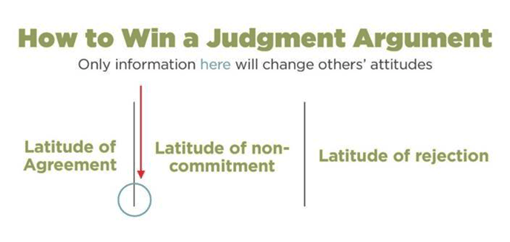At our Eighth Annual CEO Summit in Washington, DC, we had the privilege of hearing from one of the greats in deal strategy and negotiation: Professor Bob Bontempo. In addition to learning the art of persuasion, we also demystified what seems to be the complex game of negotiating. Through interactive discussion and exercises, we learned a number of tactics to immediately employ in our day-to-day jobs.
The Top 5 Takeaways from Professor Bontempo
- Mutual Value Creation
Before participating in Professor Bontempo’s session, I generally would describe my negotiating strategy as follows: “Give the other person exactly what they want and take everything else.” It sounds Machiavellian, but apparently, there’s a more eloquent description of this technique: Mutual Value Creation. If we’re able to come to an agreement that benefits all parties involved, the relationship will be productive and satisfactory for everyone. But how do we figure out how to create mutual value? Good thing we learned point #2…
- Perspective Taking Ability
People who don’t understand why the country elected President Trump lack Perspective Taking Ability. Whether or not you support the president, understanding why people voted for him will enable you (or your candidate of choice) to create value for the American people (or at least create the perception that one is doing so). Asking open-ended questions is the key to forming an understanding of what a counter-party desires – “what are the hot issues that will determine your vote in the upcoming election?” Once this question is answered, we can focus our attention on (1) creating mutual value and (2) making persuasive arguments in the “zone of indifference.”

- Payoff Table
Preparation is the most useful tool in any negotiation. The person who does his or her homework and comes to the table knowing exactly what they want is much more likely to be successful. So what’s the key exercise in preparing for a negotiation? It’s documenting the trade-offs of conceding vs. winning a point of negotiation. Start by force ranking your priorities. Then attribute a quantitative value to each point. When you sit down at the negotiating table, your discussion becomes an exercise in optimization. But at what point do we walk away?
- BATNA and Time
What role does Power play in a negotiation? A big one! Power can be simply broken down into two categories: Best Alternative To a Negotiated Agreement (BATNA) and Time. Time is self-explanatory – if one party is pressed for time, while the other is not constrained, the power dynamic is clear. Another consideration is what will happen if the two parties are unable to come to terms. If you’re negotiating the sale of your New York Jets tickets with a fan, odds are that similar seats are readily available. Your counter-party’s BATNA is bountiful. But if you are negotiating the sale of a New York Jets Super Bowl trophy, your counter-party’s BATNA is quite limited (only one such trophy exists).
- Post-Negotiation Satisfaction
This was one of the more surprising learnings in the session for me: in post-negotiation reviews, people’s feelings are hardly driven by the objective outcome of the negotiation. The top two variables in determining post-negotiation satisfaction are: (a) whether I reached the target I set coming into the negotiation and (b) whether negotiated agreement improved from my counter-party’s opening bid. Neither of those variables are the objective outcome. The psychological concept of Anchoring is key in negotiations; people tend to rely heavily on initial pieces of information. So when a child’s goal is to convince their parents to get a puppy, they should ask for three puppies. One puppy sounds like no problem after that! The parents are satisfied. The child is satisfied. And we got a new puppy! Everybody wins.
So while most of us likely aren’t negotiating over Jets memorabilia, or with our parents to buy a puppy, we all learned a few techniques to better equip us in an negotiation with our vendors, customers, employees or board. And as long as we stick to those top five fundamental takeaways, we’ll be quite successful.

